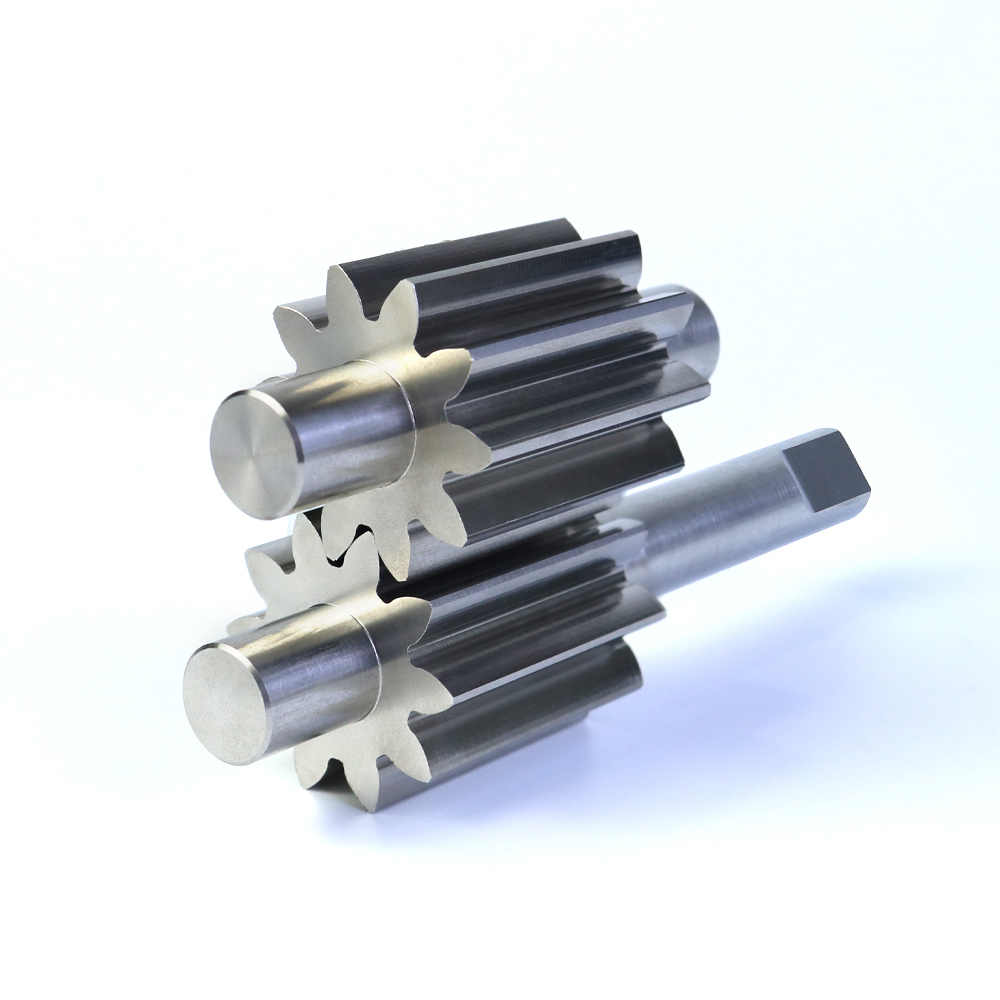터빈 실린더 가공의 혁신: 새로운 기술들의 역할

효율성, 성능, 지속가능성에 의해 점점 더 구동되는 세상에서 터빈 실린더 가공은 극적인 변화를 겪고 있습니다. 최신 머신 기술의 발전은 정밀도, 속도 및 비용 효율성 측면에서 새로운 기준을 설정하며 에너지, 항공우주, 제조 등 다양한 산업에서 터빈 실린더의 생산을 혁신하고 있습니다. 이러한 최첨단 혁신들은 단순히 터빈 실린더의 제작 방식을 개선하는 데 그치지 않고 이 중요한 부문의 품질과 성능 기준 자체를 재정의하고 있습니다.
터빈 실린더 가공을 혁신하는 획기적인 기술들
기계 공구 산업은 터빈 실린더 제조의 판도를 근본적으로 바꾸는 다수의 선진 기술들을 통합하고 있습니다:
1.고급 CNC 가공
컴퓨터 수치 제어(CNC) 기계는 오랫동안 고정밀 가공의 핵심이었지만, 오늘날의 5축 CNC 기계는 그 한계를 확장하고 있습니다. 이러한 기계들은 다음을 가능하게 합니다:
- ·다축 정밀성 : 전통적인 방법으로는 달성할 수 없는 복잡한 기하학적 구조의 가공을 가능하게 합니다.
- ·더 빠른 생산 : 사이클 시간 단축과 빠른 도구 교체로 인해 납기 시간이 줄어듭니다.
- ·사용자 정의 및 유연성 : CNC 시스템은 새로운 설계에 신속히 적응하여 특별한 정확도로 터빈 실린더 부품을 생산할 수 있습니다.
2.첨가제품 제조 (3D 프린팅)
가산형 제조 또는 3D 프린팅의 발전은 터빈 실린더 가공 분야에서 또 다른 변화를 가져오고 있습니다. 이 기술은 점차 터빈 구성 요소의 프로토타입 제작과 수리에 더 많이 사용되고 있습니다.
- ·재료 효율성 : 3D 프린팅은 고강도 합금 및 복합 재료의 사용을 가능하게 하여 재료 사용을 최적화하고 폐기를 줄입니다.
- ·복잡한 내부 구조 : 전통적인 방법과는 달리, 3D 프린팅은 냉각과 효율성을 향상시키는 복잡한 내부 구조를 만들 수 있습니다.
- ·비용 효율적인 사용자 정의 : 회사들은 비용이 많이 드는 금형 변경 없이 저량의 맞춤 부품을 신속하게 생산할 수 있습니다.
3.로봇 자동화 및 AI 통합
자동화와 인공지능(AI)은 터빈 실린더 가공 작업을大幅히 개선하고 있습니다. 로봇 팔과 AI 기반 시스템을 통해 제조업체는 다음을 달성할 수 있습니다:
- ·생산성 증대 : 자동화 시스템은 부품 적재/하역 및 도구 교환과 같은 반복적인 작업을 간소화하여 생산 시간을 줄입니다.
- ·품질 관리 개선 : AI는 설계 사양에서 벗어난 결함이나 편차를 실시간으로 감지하여 일관성을 높이고 결함을 줄입니다.
- ·자율 최적화 : 머신은 이제 가공 매개변수를 실시간으로 조정할 수 있어 정확도를 향상시키고 인간 오류의 위험을 줄입니다.
4.레이저 및 워터제트 절단
레이저 및 워터제트 절단 기술은 터빈 실린더 가공 초기 단계에서 필수적인 역할을 하게 되었습니다. 이러한 비접촉식 절단 방법은 다음과 같은 이점을 제공합니다:
- ·고정밀 절단 : 레이저 절단은 매우 섬세하고 정확한 절단을 생성하여 정확한 허용오차가 필요한 터빈 부품에 이상적입니다.
- ·무열 처리 : 고압 물을 사용하는 워터제트 절단은 열적 변형과 재료 왜곡을 방지하여 열에 민감한 재질로 만들어진 터빈 실린더의 무결성을 보장합니다.
- ·유연성 : 이 두 기술은 고강도 합금 및 터빈 제조에 사용되는 복합 소재를 포함한 다양한 재료와 함께 작동할 수 있습니다.
터빈 실린더 가공에서 새로운 기술의 이점
제조사들이 이러한 새로운 기술을 채택함에 따라 중요한 이점을 얻고 있습니다:
- ·향상된 정밀도와 품질 : 이러한 혁신은 터빈 실린더가 마이크로미터 수준의 정확도 로 가공되도록 보장하며, 고성능 산업의 엄격한 요구 사항을 충족합니다.
- ·빠른 생산 및 납기 단축 : 로봇 자동화와 AI 기반 최적화를 포함한 고급 가공 방법은 생산 주기를大幅하게 단축하여 더 빠른 배송과 낮은 운영 비용을 가능하게 합니다.
- ·비용 절감 : 3D 프린팅, 레이저 절단, CNC 시스템의 통합은 재료 낭비, 인건비 및 금형 비용을 줄여 생산 전반에 걸쳐 큰 비용 절감 효과를 제공합니다.
- ·환경 지속 가능성 : 터빈 실린더 가공에 사용되는 많은 새로운 기술들은 에너지 효율적인 머신에서 재료 소비 감소 및 재활용 능력에 이르기까지 지속가능성에 초점을 맞추고 있습니다.
산업 전반에 걸친 영향
터빈 실린더 가공에서의 이러한 기술적 발전의 이점은 특정 섹터에 국한되지 않습니다. 터빈 기술에 의존하는 산업들은 성능, 신뢰성 및 비용 효율성에서 주요 개선 사항을 보고하고 있습니다:
- ·에너지 생산 : 전력 발전에서 특히 가스 및 증기 터빈에서 이러한 혁신은 에너지 효율성을 높이고 배출량을 줄이며 주요 부품의 수명을 연장하는 데 도움을 줍니다.
- ·항공우주 : 항공기용 경량 고성능 터빈 엔진에 대한 수요는 최신 머시닝 기술로 충족되고 있어, 더 강하고 가볍으며 연료 효율이 높은 부품 생산이 가능해졌습니다.
- ·석유 및 가스 : 석유 및 가스 부문에서 해상 시추 및 전력 발전에 사용되는 터빈은 보다 신뢰할 수 있고 마모에 강한 부품으로 인해 극한 환경에서 안전性和 효율성이 향상됩니다.
터빈 실린더 머시닝의 미래
터빈 실린더 가공의 미래는 ever보다 더 밝아 보입니다. AI, 로봇 공학, 첨가 제조, 그리고 고급 CNC 시스템이 선도하면서 이 산업은 정밀성, 효율성, 그리고 혁신의 새로운 시대로 나아가고 있습니다. 제조업체들이 가능한 한계를 계속해서 확장함에 따라 터빈 실린더는 더욱 강력하고, 비용 효율적이며, 지속 가능해져 다음 세대 에너지 생산 및 항공 우주 탐사의 요구를 충족시킬 것입니다.
터빈 제조 분야의 기업들에 대해선 이제 이러한 혁명적인 기술들을 받아들일 때입니다. 그 결과로 생산성이 향상되고, 제품 품질이 좋아지고, 시장에서 강한 경쟁 우위를 점할 수 있을 것입니다.


